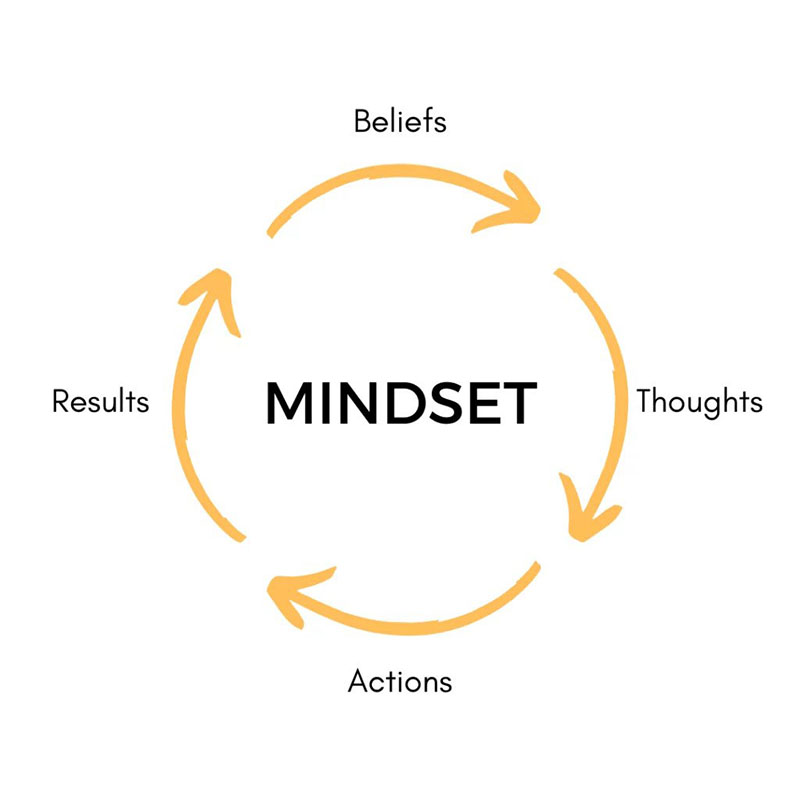By Tracy Tsai, PCC, CPC
What is Executive Presence?
Have you ever witnessed a leader walk into a room and deliver a message that has the audience glued to her every word? She has an indescribable quality that everyone can recognize, but it can be challenging to articulate what “it” is.
That’s because executive presence isn’t one isolated quality, but a powerful combination of factors that elicits confidence, builds trust and motivates others to rally behind your ideas and vision. Essentially, it’s how people experience you. As a leader, having a strong executive presence helps you command attention, influence others, and increases others’ confidence in your ability to lead effectively.
Why is Executive Presence for Women Important?
When you first enter the workforce, you’re rewarded for your knowledge and the set of skills that you bring to the table. However, as you progress in your career, you may begin to realize that skills alone aren’t enough to move you up the ladder.
Those who demonstrate strong executive presence are more likely to be seen as credible and capable, so it’s a major factor in how others evaluate your leadership potential.
Over the years at Her New Standard, we have seen participants in our women’s leadership programs experience this impact. As women learn how to show up more powerfully, it’s not unusual for them to receive new opportunities and promotions as a result.
Can Executive Presence Be Cultivated?
If you think about the women leaders you respect, it’s likely that most of them have evolved their leadership presence over time – they weren’t simply “born with it.” This is good news, because it means there are actionable steps you can take to strengthen your presence.
Before delving into these specific actions, let’s begin by exploring the foundation of executive presence – your mindset.
Why Having a Leadership Mindset Matters
Your mindset begins with your core beliefs. Your values and beliefs shape your thoughts and opinions, which then drive the actions that you take and the outcomes that you achieve. In other words, your mindset dictates the results that you get.
Here’s an example:
- Belief: I am smart and capable.
- Thought: I have a unique perspective my team can benefit from.
- Action: I take an unpopular stand on a project we are considering.
- Results: The team makes a better decision as a result of my point of view.
This is also true with executive presence. What happens on the inside impacts how you show up in front of others.

When it comes to executive presence, self-confidence is crucial. However, many of us – women in particular – fall victim to our “inner critic,” or that voice in our heads that questions our abilities and fixates on our perceived shortcomings. The inner critic makes us doubt our capacity to tackle new challenges and constantly ruminates over what we could have done differently. Listening to these negative and self-deprecating thoughts, many of which happen on autopilot, can derail us from developing a strong executive presence.
That’s why we believe that presence can be nurtured and developed by focusing on your beliefs. Once you become aware of your inner critic, you can challenge the messages that are not serving you.
For example, if you show up late to an important presentation or feel flustered because you are unprepared, it’s likely your inner critic is going to be on overdrive. Your actions will then be impacted by these negative thoughts, making it very difficult for you to project confidence during your presentation. Instead, take a deep breath to calm your nerves, and ask yourself “Who is the leader I want to be in this situation?” Take a moment to reaffirm the unique value that you bring and the hard work that you’ve done to get here, and let your “inner champion” drive your self-confidence, despite your rough start.
Strategies for Developing Executive Presence
| STRATEGY | TACTICS |
| Ask for Explicit Feedback |
|
| Be aware of Habits |
|
| Practice New Behaviors |
|
| Get Clear on Your Leadership Brand |
|
1. Ask For Explicit Feedback
Often, when we get feedback, it sounds something like, “You need to work on your presence.” Unfortunately, statements like this are far too vague to be of real value to you. If you receive this kind of feedback, delve deeper by asking specific questions such as:
- What specific behaviors are getting in my way?
- What would it look like if my presence improved?
- What is your overall impression of me as a leader?
- What steps can I take to communicate with greater impact?
Don’t limit these questions to your manager. Try to also solicit feedback from other people you interact with, including your colleagues, team members and mentors. The more responses you get, the better you will understand how others perceive you.
It also helps to ask for feedback immediately after a meeting or presentation, while the experience is fresh in their minds. If the feedback you receive is solely positive, ask for constructive input by probing, “What are two specific things I can do differently next time to enhance my impact?” This allows you to gather valuable insights for improvement and further develop your skills and presence.
2. Be Aware of Habits that Minimize Your Presence
Everything you do or say can either enhance or detract from your presence. These minimizing behaviors become ingrained in us over time, so we are often not even aware of them. This is where feedback from others comes in handy.
Also, while the substance of the things we say is important, research shows the manner in which we deliver them is even more important. Your tone, body language, and overall communication style all play crucial roles in how your message is received and perceived by others.
Be aware of the following verbal and non-verbal behaviors that can negatively impact your presence:
- Softening statements by inserting words like “kind of”, “maybe”, “just”, or “actually.”
- Using too many filler words, such as “um”, “okay”, or “right.”
- Undermining your own credibility by prefacing ideas with “You may have already thought of this…” or “This may not work but…”
- Raising the pitch of your voice at the end of a sentence as if asking a question, when you’re really making a statement.
- Saying “sorry” for things that aren’t your fault or that don’t warrant an apology.
- Being too verbose. For more senior audiences, lead with the main point up front, and add supporting detail as needed for clarity. Keep your message concise.
- Not making eye contact or speaking too softly.
- Having a slouched posture with hunched shoulders or crossing your arms and legs. Whether standing or sitting, don’t be afraid to take up space. You belong there! Put both feet on the floor and open your chest. This allows your breath to flow more fully and your voice to sound more confident.
- Nodding by default. Women have a tendency to nod when they want to demonstrate understanding and empathy. However, excessive nodding may inadvertently undermine your authority. Only nod when you truly agree with someone.
- Fidgety behaviors like tapping your foot or playing with your hair or jewelry.
3. Practice New Behaviors
After identifying areas for improvement, select a few specific behaviors to focus on and practice. A helpful technique is to record yourself during rehearsals or speaking engagements. By capturing yourself on video, you can see yourself as others see you. Pay close attention to whether you’ve successfully addressed the targeted behaviors and also be on the lookout for any other actions that may enhance or detract from your overall presence.
Another strategy is to study a leader who has a presence that you admire. Watch what they do and identify what specific behaviors contribute to their impact. Consider incorporating some of those techniques into your own approach, while maintaining your own authenticity. Make sure that you adapt these behaviors in a way that aligns with your own personality and style, allowing you to develop your own unique presence.
Integrating these new behaviors and turning them into habits requires time and practice, so think of ways to remind yourself to do this. Visual cues, such as wearing a specific ring or bracelet, can serve as helpful reminders throughout the day. Another helpful technique is to do a quick visualization exercise before important meetings.
4. Get Clear On Your Leadership Brand
A common trait among many women leaders with a strong presence is that they are clear on who they are, what they stand for, and what drives them. When you have an understanding of your values and beliefs and how that ties into your strengths and sense of purpose, your self confidence increases. As self-confidence is the foundation of executive presence, it’s essential to clarify what your leadership brand is. This will help you project authenticity and conviction, making your presence even more impactful. So invest the time to understand who you are as a leader, internalize that self-awareness, and you’ll be able to project a more authentic, clear and powerful presence to others.
Developing a strong and influential presence is a journey that starts from within – it is grounded in your leadership mindset. Be aware of how the inner critic impacts your presence so you can consciously choose beliefs that can drive greater self-confidence. Seek out feedback from others and practice the behaviors you’d like to work on. Over time, you’ll be able to cultivate a more empowering presence that will not only enhance your own impact and effectiveness, but will also inspire and empower those around you.
Interested in learning how HNS can support your women leaders?

Lead with Confidence, Speak with Power, Own Your Impact.
Executive presence, confidence, and self-advocacy aren’t optional for women leaders — they’re essential. This guide offers actionable strategies and practical insights to help you cultivate these critical skills and reach your next level of leadership, on your terms.
(No email required)
Enjoyed this post? You might also like…




